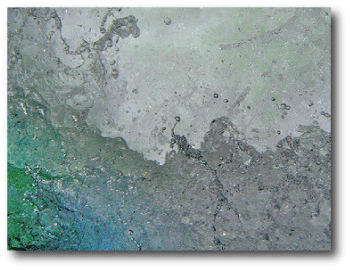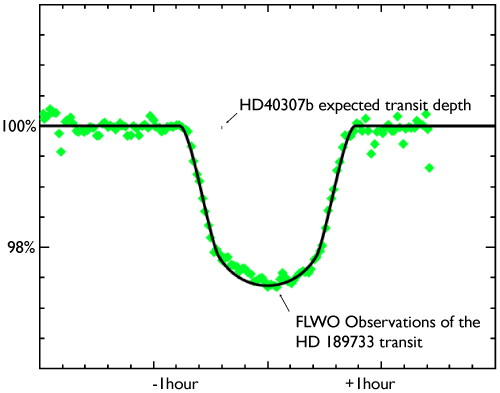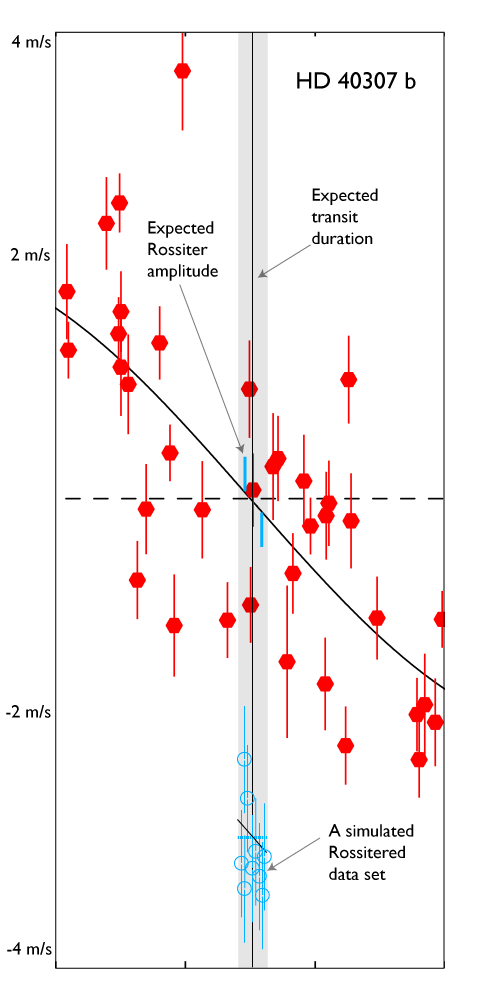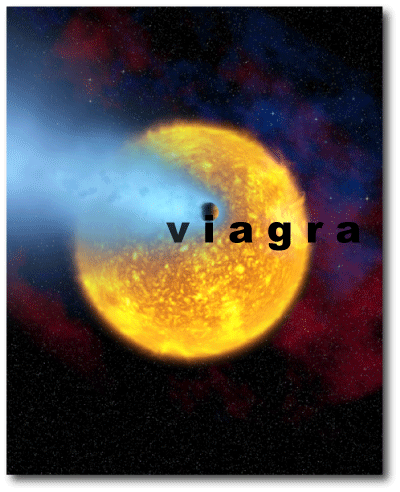
It’s a struggle to stay afloat in the non-stop flow of results. As a case in point, the Mayor et al. discovery preprint for HD 40307 b, c, and d has already been up on astro-ph for several weeks, and I only just a chance to read it carefully. The paper spells out the details of the announcement made at the Nantes conference last month, and ends with some bromides that seem to telegraph that the photometric transit search for planets b, c, and d is not yet definitive:
One of the most exciting possibilities offered by this large emerging population of low-mass planets with short orbital periods is the related high probability to have transiting super Earths among the candidates. If detected and targeted for complementary observations, these transiting super-Earths would bring a tremendous contribution to the study of the expected diversity of the structure of low-mass planets.
No controversy in that paragraph. It’ll be undeniably dope when the super-Earths start materializing in transit. Given that population of hot sub Neptunes in our Galaxy is apparently more than five times larger than the human population, it’s also likely that a significant number of these planets transit bright stars, and that’s good news for JWST.
In the interim, it’s not hard to see why the jury is still out on transits for HD 40307 b,c, and d. With its period of 4.61 days, the ~4 Earth-mass HD 40307b has a healthy a-priori transit probability of ~7%. Its expected transit depth, however, is a meager 0.05%. So far, the shallowest known transit for an extrasolar planet is that of HD 149026 b, which, at 0.3%, is fully six times deeper.
A ground-based detection of transits by HD 40307b would be quite a coup indeed. Is it feasible?The parent star HD 40307 is a K dwarf that’s quite similar in both spectral type and apparent magnitude to HD 189733. We can thus draw on the HD 189733 transits to get a ball park idea of the quality of the photometric data that one might expect from HD 40307. The best published ground-based light curve for HD 189733 that I could find comes from Bakos et al. (2008), who used the FLWO 1.2m telescope in Arizona to get the time series that I’ve reproduced just below. The skimpy expected depth of a central transit by HD 40307b is shown for comparison. The situation looks daunting.

The out-of-transit data in this light curve has a reported RMS scatter of 2.6 mmag for photometric points taken every 17 seconds (binned data is shown in the figure). Naive statistics thus imply that a 0.5 mmag central transit by HD 40307b could be detected by the FLWO 1.2m with at least several sigma confidence. Life, however, is more than root N. Systematic errors are probably large enough to scotch a discovery on a single night of observation, but nevertheless, by repeatedly observing, either with multiple nights or with multiple telescopes, a detection seems within reach. And it’s worth in excess of USD 5M. (At the moment, it seems there’s little need for European or Asian observers to hedge their currency risk.)
In the event that photometric campaigns aren’t up to the task, it’s in the realm of possibility that a transit by HD 40307b could be extracted via a spectroscopic detection of the Rossiter-McLaughlin effect. Assuming a 1 km/sec rotational velocity for the star, the expected half-amplitude of the Rossiter distortion is similar to the error bars on the published radial velocities. In the following figure, I’ve dished up a simulated Rossitered data set from HARPS, superimposed (with an offset for clarity) on a blown-up version of the radial velocity plot in the paper. During a single occultation, the radial velocities can produce a ~0.85 sigma detection.
 In this case, the economics are a bit steeper, but still viable. At the current dollar-euro exchange rate, I’d estimate that USD 15K is a fair price for a HARPS night. (Forgive all this yak yak about currency — as an American traveling in Europe at the moment, I’m rather shocked to be seeing $6.24 0.7l bottles of water at the airport newstand!). One would need 4 hours, or half a night to observe the transit and get adequate baseline. To be at least four-sigma sure, you’d want to rack up ~20 full transits (which would take quite a while). Factoring in the expectation value of 0.07 arising from the transit probability, this works out to a USD ~2M detection.
In this case, the economics are a bit steeper, but still viable. At the current dollar-euro exchange rate, I’d estimate that USD 15K is a fair price for a HARPS night. (Forgive all this yak yak about currency — as an American traveling in Europe at the moment, I’m rather shocked to be seeing $6.24 0.7l bottles of water at the airport newstand!). One would need 4 hours, or half a night to observe the transit and get adequate baseline. To be at least four-sigma sure, you’d want to rack up ~20 full transits (which would take quite a while). Factoring in the expectation value of 0.07 arising from the transit probability, this works out to a USD ~2M detection.

